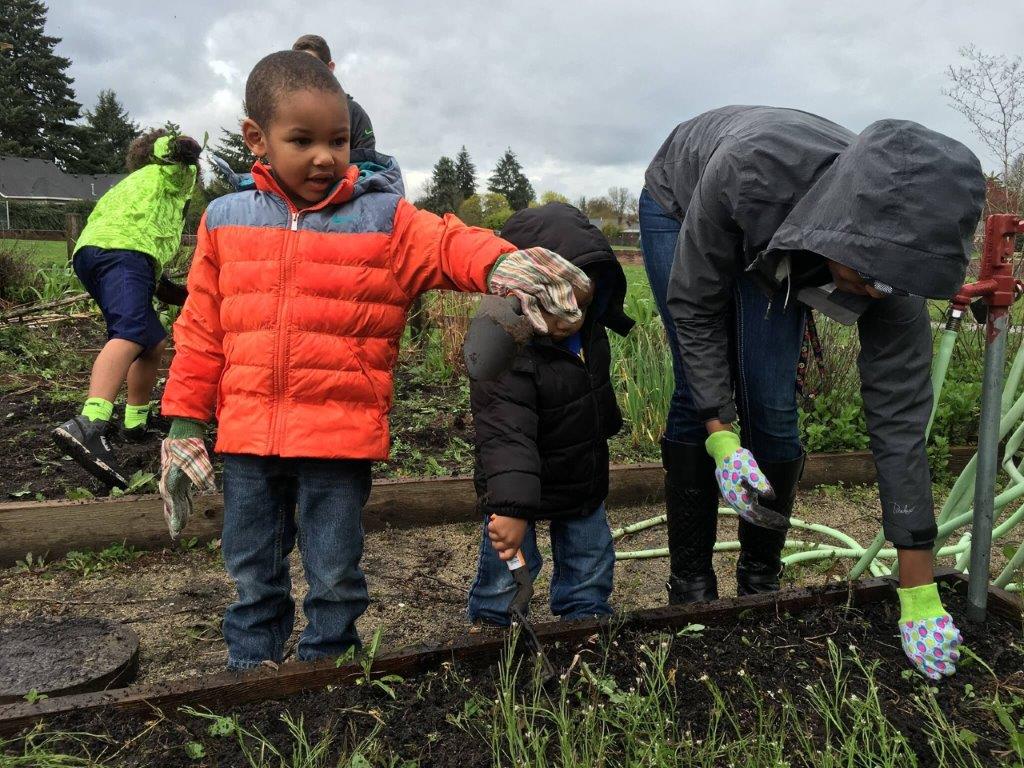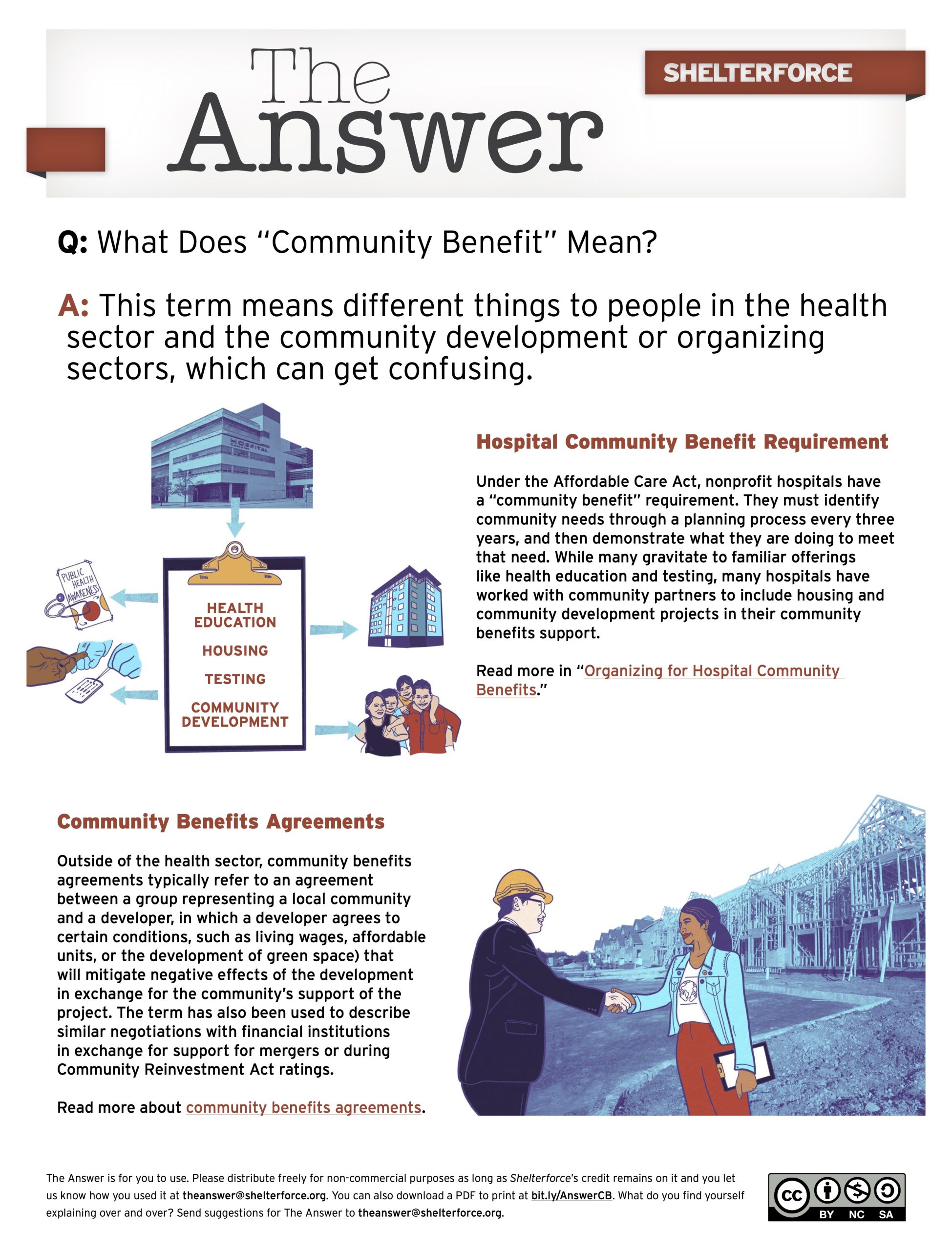
Cornerstone Community Housing provides residents with a free produce market. Thanks to an evaluation of its health programming, the organization can now advocate more clearly at the state legislature for greater food benefits and other assistance to residents. Photo courtesy of Cornerstone Community Housing
Health isn’t a foreign topic to housing and community development groups. But the language and data needed to explain health-related outcomes frequently are.
With this in mind, NeighborWorks America and Enterprise Community Partners jointly created the Health Outcomes Demonstration Project, equipping almost two-dozen community development groups with tools and assistance to help them better evaluate and understand the health-related results of their programs. The three-year project wrapped up in June.
“People were saying that community development has health outcomes, but they can’t measure them,” explained Maggie Grieve, the vice president of Success Measures, NeighborWorks’ in-house evaluation consulting group, which jointly ran the project with Enterprise. In response, she said, “we’re helping people define what they need to know to continue their work strengthening their communities.”
The initiative was the by-product of the growing focus—in the community development field and elsewhere—on the social determinants of health, living conditions that deeply affect people’s health. Many organizations know intuitively that their work providing housing, offering fresh food options, or making neighborhoods safer helps people feel better and live longer. But there haven’t been many user-friendly tools available that help them evaluate exactly how that’s occurring or allow them to easily discuss it with others.
“A lot of the measures were clinically focused, such as checking changes in blood pressure,” said Jessica Mulcahy, a director at Success Measures. But health is so much more than that. The question, though, was how to capture it through data.
In response, after conducting a literature review and gathering a range of stakeholders, Success Measures came up with a set of 65 field-tested, health-focused measurement tools. Mostly surveys, questionnaires, and interview guides, the tools examine aspects of individual and community health and are easy to utilize and analyze.
The next step was to understand how organizations would use these tools, and what kind of assistance and support they might need. To do so effectively, NeighborWorks invited Enterprise to join it in a demonstration project.
With funding from the Robert Wood Johnson, Kresge, and Hearst foundations, NeighborWorks, Enterprise, and the U.S. Department of Housing and Community Development—as well as in-kind support from the Federal Reserve Bank of San Francisco—the Health Outcomes Demonstration Project was born. Twenty organizations from around the country—engaged in activities such as neighborhood improvement, housing rehabilitation, financial literacy, and youth education— were chosen from a competitive process in late 2016, and began gathering data shortly thereafter.
Each group was provided with $45,000 to apply the health outcomes tools to ongoing programs. But a key element of the project was its hands-on nature. Consultants provided technical assistance and guided the organizations through the process of designing and implementing their evaluations, which entailed two rounds of primary data collection, each a few months long. Residents and other program participants responded to surveys that allowed the organizations to examine their programs’ effectiveness.
Getting that data turned out to be helpful to the organizations, said Lindsay Eilers, Enterprise’s director of impact assessment and evaluation. “There’s a lot of power in data. Even at baseline, there was valuable information they collected about the populations and communities they served.” In response, several organizations made programmatic changes even before collecting a second round of data. “And by the end, almost all of them had made some changes to programming or partners,” said Eilers.
In Eugene, Oregon, for example, Cornerstone Community Housing had been providing a free produce market for residents, presuming that it was an obvious health booster. But their evaluation illustrated that while participants did appreciate the food, they were still struggling to make ends meet financially—and that was ultimately a greater risk to their health. Having the hard data that came out of the evaluation allowed Cornerstone staff to advocate more clearly at the state legislature for greater food benefits and other assistance to residents.
In Chicago, staff at Claretian Associates also gained new insights through the project. Located in south Chicago near now-defunct steel mills, they expected to find some serious health issues. But residents also said they weren’t getting exercise because they were afraid to go out, and there were no affordable gyms in the area: the longtime YMCA had closed down in 2017.
“For us, that was prime information we could use,” said Angela Hurlock, Claretian Associates’ executive director. “It convinced us that we needed a partner to buy the building.”
And thanks to the new data that arose as a result of the project, the organization did exactly that. It was able to make a case for a new community center and bought the former YMCA building together with a national partner. In 2020, the 40,000-square-foot space will open with a new fitness center, as well as space for organizations providing financial coaching, youth programming, and services to families with severely disabled children.
All of that came out of being part of the Health Outcomes Demonstration Project, said Hurlock, who added that she and her staff are planning on conducting similar evaluations of all of the group’s programs. After all, with data in hand, the organization can be more confident in partnering with health-related institutions and other funders.
“For us, it started with looking at our folks and more deeply understanding the social determinants of health,” she said. “It’s about not being so afraid of collecting data, of having a better understanding of what data we need to collect.”




Quick edit: should be U.s. Sept of Housing and Urban Development